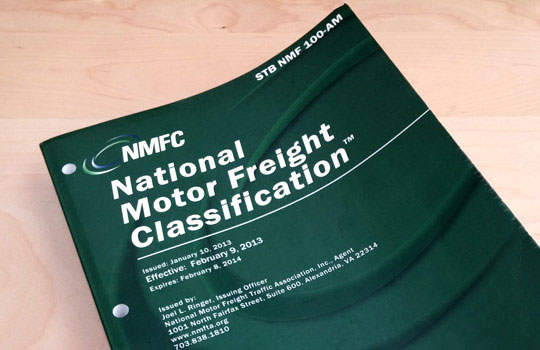
by logisticsplus | Dec 4, 2018 | News
 Please see the attached Disposition bulletin from the recent meeting of the Commodity Classification Standards Board. All subject items were approved as docketed or modified as reviewed by the CCSB with the exception to Subjects 5 and 6 which were deferred until the February 2019 meeting. The supplement with the changes to the NMFC will be published on November 29th, 2018 with an effective date of December 29th, 2018. Please review the entire disposition bulletin as many commodities have changed classification.
Please see the attached Disposition bulletin from the recent meeting of the Commodity Classification Standards Board. All subject items were approved as docketed or modified as reviewed by the CCSB with the exception to Subjects 5 and 6 which were deferred until the February 2019 meeting. The supplement with the changes to the NMFC will be published on November 29th, 2018 with an effective date of December 29th, 2018. Please review the entire disposition bulletin as many commodities have changed classification.
Among all of the changes, please make note the following changes for more common commodities that may impact many shipments/customers:
Subject 1: NMFC Item 28160; Boots, NOI, Footwear, NOI, other than hosiery, Shoes, NOI. Will change from a straight class 150 to a two-tier density break. Less than 6 pcf is class 200, 6 pcf or greater is class 125.
Subject 2: NMFC Item 123550; Machines, ice making. Will change from a straight class 92.5 to a three-tier density break. Less than 6 pcf is class 250, 6 but less than 10 pcf is class 150, 10 pcf or greater is class 92.5.
Subject 8: NMFC Items 61900; Fans, exhaust or ventilating and 61920; Fans, NOI are cancelled. New NMFC Item 61910 is created to encompass exhaust/ventilating fans and fans, NOI. This item will have a two-tier density break, less than 6 pcf is class 200, 6 pcf or greater is class 110.
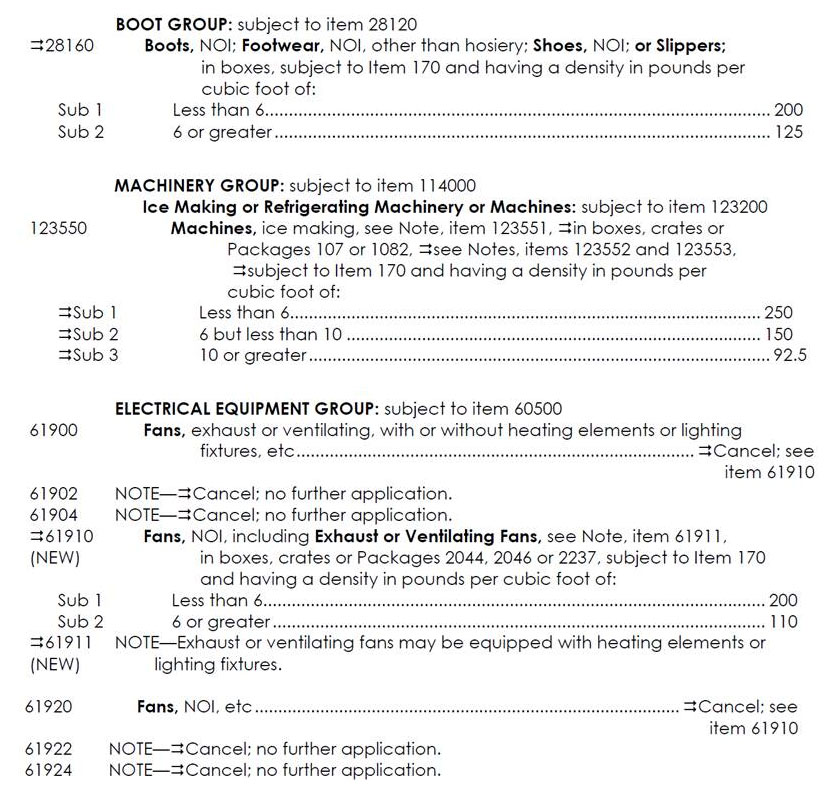

by logisticsplus | Dec 3, 2018 | News
 Global Trade Alert Message:
Global Trade Alert Message:
The United States will hold off on raising China tariffs to 25 percent as President Trump and President Xi of China have agreed to a 90-day truce. The White House announced that “President Trump has agreed that on January 1, 2019, he will leave the tariffs on $200 billion worth of product at the 10 percent rate, and not raise it to 25 percent at this time.”
This Global Trade Alert is for the third tranche of China tariffs only. Tranches 1 and 2 will remain at 25 percent.
More details regarding the tariffs can be read here: https://www.cnbc.com/2018/us-china-tariffs

by logisticsplus | Nov 30, 2018 | News
 Everyone, meet John Allen.
Everyone, meet John Allen.
“Today started out like most days, but with a little more stress than usual. Folks were a bit on edge and I was trying to find a way to get everyone back on pace. We pulled out the burgers in the freezer and then John Allen said, ‘Just give me a few minutes and I will get everything back on track.’ As you can see, John has one arm, but is forklift certified and a tremendous people person. He loads and offloads trucks. He pulls freight and the customers love him, and he has one heck of a golf game. John has been a huge asset to our Dallas warehouse. All it took was a few minutes of John playing the guitar and the entire staff was back at it in full force- all thanks to him. John displays the true spirit of Logistics Plus and our employees’ shared Passion for Excellence.” – Sabrina Ragland
Thanks to Sabrina (our Dallas/Fort Worth Warehouse Manager) for sharing this amazing story.
You can watch the video of John playing the guitar on the Logistics Plus YouTube Channel or below.

by logisticsplus | Nov 30, 2018 | News
As a certified Great Place to Work®, we have some of the best employees in the industry. One of those employees is Adrienne Sanders, WeWork Install Coordinator & Claims Management, who works from the Logistics Plus Global Headquarters in Erie, PA.
This video is included in a series of new “Employee Spotlight” interviews over the coming weeks and months that will showcase many of our diverse employees from around the world. We hope you enjoy getting to know a little more about us and the “people who power the plus” at Logistics Plus.
A special thanks to Adrienne for her participation in this interview. Stay tuned in the coming weeks to learn more about the employees at Logistics Plus.
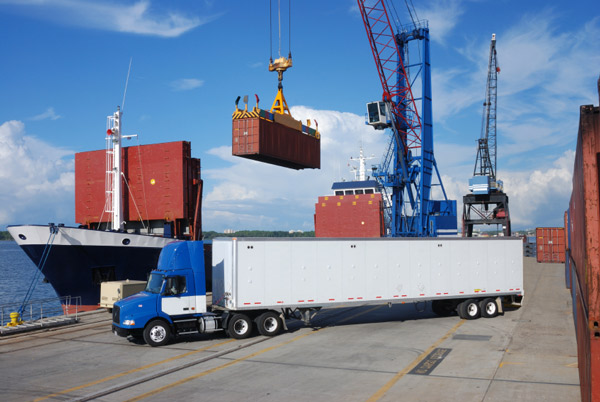
by logisticsplus | Nov 29, 2018 | News
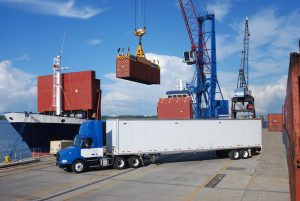 Intermodal shipping is a method of moving freight using more than one mode of transportation. The most common form of intermodal shipping is using truck and rail, but it can also involve ships or planes. The intermodal process most often begins with a container being moved by truck to a rail, and then back to a truck for delivery at the final destination. Intermodal shipping can be an appealing option for shippers domestically and internationally because it lessens the amount of handling performed with the cargo, and in turn lowers shipping costs. Not sure when to use this method of shipping? Let’s take a look at some of the benefits intermodal shipping offers.
Intermodal shipping is a method of moving freight using more than one mode of transportation. The most common form of intermodal shipping is using truck and rail, but it can also involve ships or planes. The intermodal process most often begins with a container being moved by truck to a rail, and then back to a truck for delivery at the final destination. Intermodal shipping can be an appealing option for shippers domestically and internationally because it lessens the amount of handling performed with the cargo, and in turn lowers shipping costs. Not sure when to use this method of shipping? Let’s take a look at some of the benefits intermodal shipping offers.
Cost-Efficiency
Intermodal shipping is one of the most cost-efficient shipping methods available. Since more than one transportation method is used in this process, cargo that is moved by rail transportation instead of trucking can save on fuel costs. Intermodal shipping is often used for long distances, and it is estimated that one ton of freight can move 450 miles on a single gallon of fuel, which is much more cost efficient than trucking.
Reliability and Security
The most persuasive aspect of intermodal freight shipping is that it’s a more secure and reliable way to ship compared to other modes of transportation. Intermodal transportation lowers the number of times freight is handled, reducing the risk of loss or damage. Though not always the fastest choice, the improving reliability of intermodal shipping is another benefit due to North America’s comprehensive rail network that makes it possible to deliver shipments across the country and everywhere in between within a reasonable time frame. As LTL and Truckload capacity continues to tighten, intermodal transportation has become more reliable.
Reduced Carbon Footprint
Intermodal transportation is environmentally friendly compared to single modes of transportation such as trucks. As focus on green initiatives continue to rise, it’s important to move goods by choosing the way that has the least negative impact on the environment. On average, trucks emit around 20 pounds of CO2 per 100 miles, where as a train only emits 5 pounds or less over the same mileage. Using more than just trucks for shipping is a smart way to reduce carbon footprints.
Is Intermodal The Right Choice For My Shipment?
- The longer the distance a shipment needs to travel, the more likely that intermodal shipping is a good choice. For any freight moving more than 500 miles or longer than one day by truck, this method of transportation may make sense.
- Intermodal transportation is most suitable for finished goods in loads weighing less than twenty tons.
- Freight with intermediate values are better suited for intermodal shipping. High value shipments are often sent via air freight because it is the most direct method of shipping. On the other hand, low value shipments frequently travel via rail or ocean freight.
- If the shipment is not urgent, intermodal may be the right choice due to the cost savings of this transportation method.
- If you continuously send multiple LTL shipments to the same location, you may want to think about switching to intermodal shipping.
Are you considering intermodal for your next shipment? Contact us today and find out how Logistics Plus can help you manage your shipments from start to finish while saving you time and money.

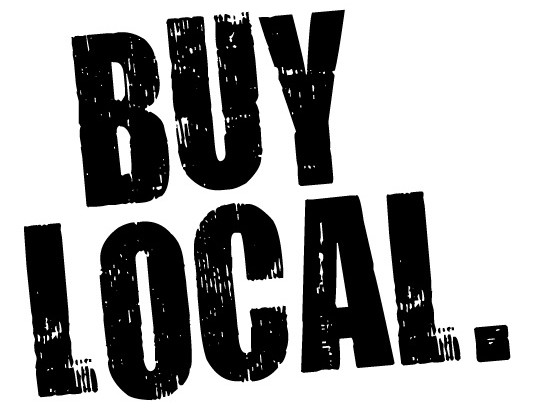
by logisticsplus | Nov 26, 2018 | News
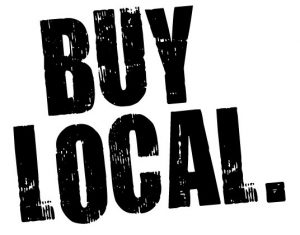 Logistics Plus appeared again in November’s edition of the Lake Erie Lifestyles magazine, a monthly publication circulated by Erie Times-News and GoErie.com. The theme of the entire issue is “Buy Local.” In the article, Gretchen Blough, Customs Brokerage Manager for Logistics Plus, discusses the recent tariff changes and how they might impact local businesses. “It’s our job to guide customers through every complex step of the customs process,” Blough said. A reprint of the story is shown below (and will later appear online at www.goerie.com/lifestyle/lake-erie-lifestyle.)
Logistics Plus appeared again in November’s edition of the Lake Erie Lifestyles magazine, a monthly publication circulated by Erie Times-News and GoErie.com. The theme of the entire issue is “Buy Local.” In the article, Gretchen Blough, Customs Brokerage Manager for Logistics Plus, discusses the recent tariff changes and how they might impact local businesses. “It’s our job to guide customers through every complex step of the customs process,” Blough said. A reprint of the story is shown below (and will later appear online at www.goerie.com/lifestyle/lake-erie-lifestyle.)
You can click the image below to view a PDF version.
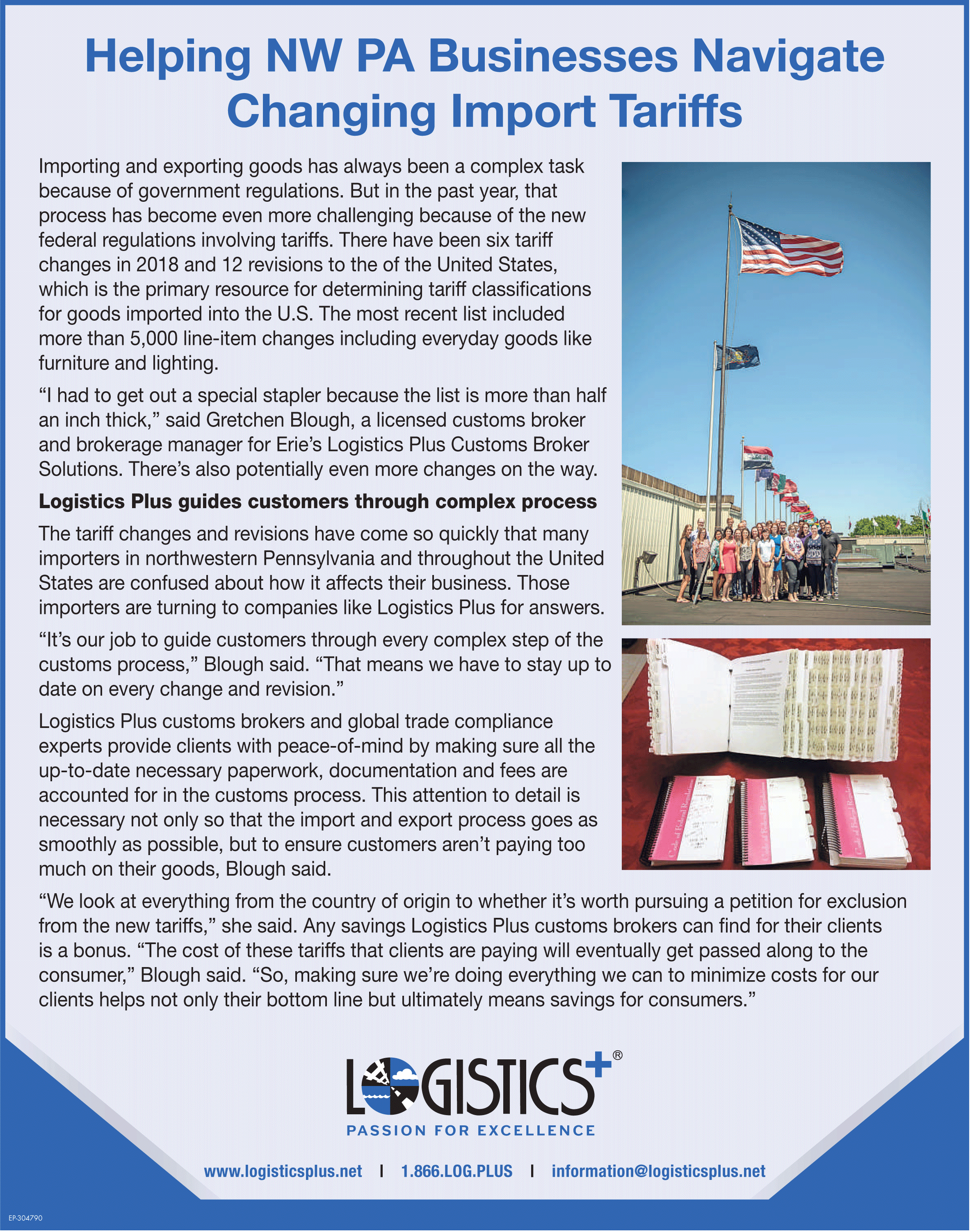

 Please see the attached Disposition bulletin from the recent meeting of the Commodity Classification Standards Board. All subject items were approved as docketed or modified as reviewed by the CCSB with the exception to Subjects 5 and 6 which were deferred until the February 2019 meeting. The supplement with the changes to the NMFC will be published on November 29th, 2018 with an effective date of December 29th, 2018. Please review the entire disposition bulletin as many commodities have changed classification.
Please see the attached Disposition bulletin from the recent meeting of the Commodity Classification Standards Board. All subject items were approved as docketed or modified as reviewed by the CCSB with the exception to Subjects 5 and 6 which were deferred until the February 2019 meeting. The supplement with the changes to the NMFC will be published on November 29th, 2018 with an effective date of December 29th, 2018. Please review the entire disposition bulletin as many commodities have changed classification.





 Intermodal shipping is a method of moving freight using more than one mode of transportation. The most common form of
Intermodal shipping is a method of moving freight using more than one mode of transportation. The most common form of 

 Logistics Plus appeared again in November’s edition of the Lake Erie Lifestyles magazine, a monthly publication circulated by Erie Times-News and
Logistics Plus appeared again in November’s edition of the Lake Erie Lifestyles magazine, a monthly publication circulated by Erie Times-News and 